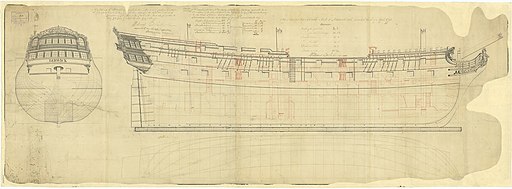A talk presented by Phil Rowett on 14th May 2025
There have been 11 vessels that have taken the title of HMS Berwick and of these, eight were sailing ships. This first talk was about these eight vessels.
The first was launched in 1689 as part of the extension of Charles II’s navy and was given the name Berwick to show that the King’s power extended to all the different parts of his kingdom. It fought at the battles of Beachy Head 1690, and Barfleur and La Hogue in 1692.
The second Berwick was a rebuilding of the first, it fought in various battles including Vigo Bay and at Gibraltar when the ship’s boats landed Marines who captured what has been a British possession for the intervening 300 years and more.
The third vessel was an unlucky vessel, as part of Hosier’s fleet off the Central American coast where there was little fighting and huge casualties from disease.
The fourth arrived as relations with France and Spain were collapsing and so it was kept busy. It is said that “The Battle of Toulon is the greatest example of tactical disorder in British naval history.” Out of this mess the only ship to receive any praise was the Berwick. Although this version sailed for less than twenty years, it fought in many battles and was a proving ground for a new generation of talented officers.
The next three Berwicks are all part of the same story. The fifth Berwick was launched in 1775 and went on to play a large part in the Napoleonic Wars.

Unusually, this vessel was captured by the French and thus ended up in the French fleet at Trafalgar. While surviving the battle the ship sank before reaching Gibraltar. Her place was taken by the Spanish prize St Juan Nepomuceno that was now rechristened as the Berwick. This version stayed in Gibraltar until another Berwick appeared and this seventh version saw out the war until it was broken up in 1821.
There would not be another ship of the same name until the end of the 19th century and this was to be a coal-burning metal leviathan.
“Oh,”! you cry,” that’s only seven!” Indeed, there was another Berwick but this has much argument as to whether it was ever an HMS Berwick rather than just a merchant ship. What we can be sure of is that it was adopted by the Navy as HMS Sirius and became the flagship of the First Fleet to Australia which established the first penal colony there.
So eight sailing Berwicks and another three modern versions to go…
Phil Rowett
